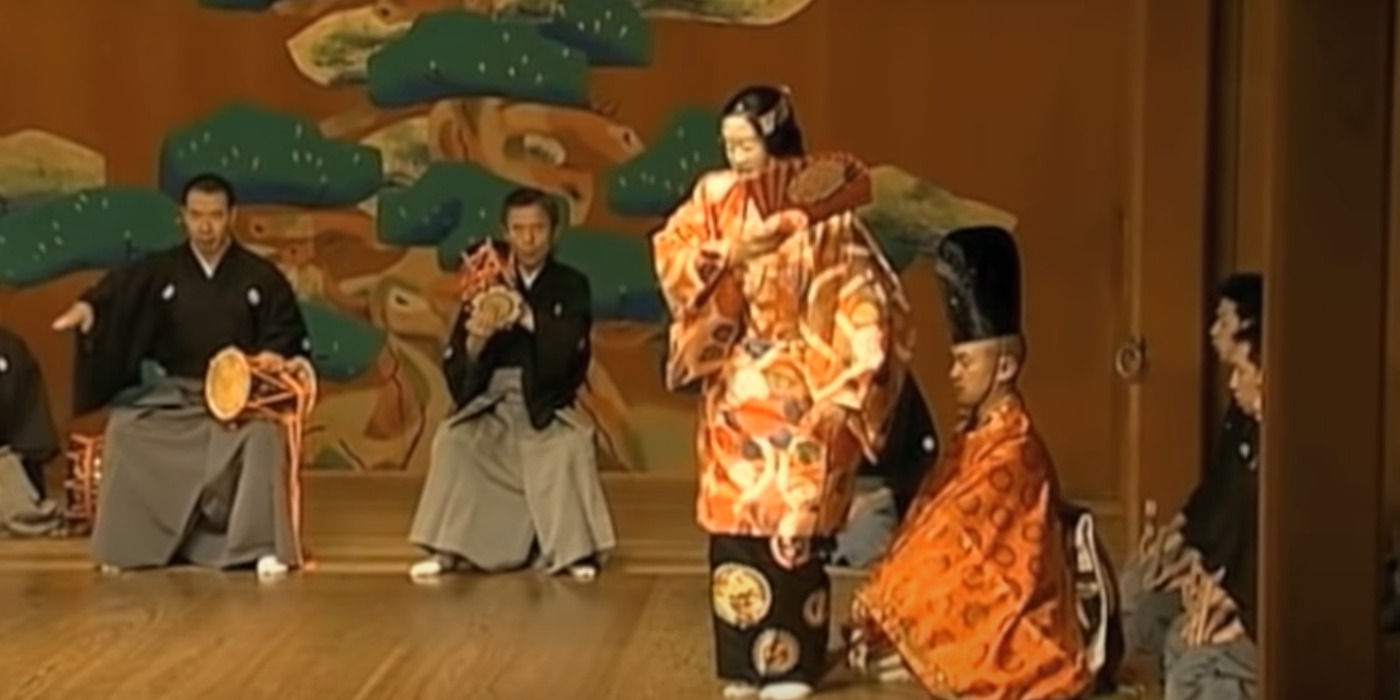Netflix’s ‘The Village’ is a Japanese thriller drama film directed by Michihito Fujii that details the story of Yu Katayama in his small village, Kamonmura. Yu, a worker at the garbage disposal facility, faces ridicule and ostracization from his community due to his family’s past. However, after his childhood friend, Misaki, returns to his village, she presents Yu with an opportunity to change his life and turn over a new stone.
In the village of Kamonmura, the art of Noh, notably practiced by Kokichi Ohashi, is a source of significant traditional value. After the processing plant’s establishment, the facility and the Noh theater present two opposite ideas that influence Yu’s character arc and storyline. Due to the rich depiction of Noh, viewers might be curious to know more about the art form and the ‘Kantan’ play mentioned in the film. Here is everything we know about the same!
Noh: Ancient Japanese Theatrical Art
Noh is one of the most ancient and revered forms of theater that has been a part of Japanese culture for centuries. It’s a form of storytelling that utilizes acting, dancing, and musical aid to depict a tale with little dialogue and a heavy emphasis on intense emotions. Usually, stories for Noh are taken from classic literature and can be based on legends or real events. The play itself features one main protagonist, the “Shite,” and sometimes a secondary character, the “Shitetsure.” Aside from the stagehands and musicians, the play can also include character foils to the “Shite” and “Shitetsure,” the “Waki” and the “Wakitsure.”

Since the play focuses on the intensity of emotions, the stage is kept simplistic and devoid of any distractions from the subject matter, as embodied by the performer. Nevertheless, Noh employs the usage of ornate costumes and props to enhance the performance. Masks, in particular, are of significant value to the performer and the community since they’re instrumental to the art of Noh.
Interestingly, Noh is known for its strict preference for tradition over change. As such, the plays, costumes, props, and overall performances tend to follow a fixed structure. Due to the same, Noh acts as a perfect metaphor for Kamonmura’s traditional values when pitched against the rapid industrialization in the village. As the processing plant continues its expansion within Kamonmura, the theater community within the village begins to decline.
Similarly, Kokichi, who represents Noh in the film, stands opposite his brother, Mayor Shusaku Ohashi, the face of the processing plant. Where Shusaku thrives within the village after the establishment of the plant, Kokichi takes his leave from Kamonmura due to the same. As such, Noh signifies a crucial aspect of Kamonmura and vastly contributes to the thematic narrative of the film.
Kantan is a Real Play
Yes, ‘Kantan’ is a real Noh play. ‘Kantan,’ written by Yukio Mishima, is a part of a collection of Noh plays called ‘Five Modern Noh Plays.’ The play follows the story of a young man, Rosei, in the Shu Han country of China. The boy stays over at an inn and sleeps on a mysterious pillow. Afterward, royal guards awake Rosei, announcing him the new king of the land. After Rosei takes over the throne as emperor, he rules for 50 glorious years. Eventually, however, Rosei finds his kingly life slipping away from him as he wakes up back in the inn. In the end, he realizes his life as an emperor has been only a dream. The incident teaches Rosei a lesson about the frailty of life and how quickly things can end as a dream does.

In ‘The Village,’ Misaki presents Yu with the protagonist’s mask from ‘Kantan’ and recounts the story to him. She advises Yu to wear the mask whenever life becomes too overwhelming for him, which Yu does as things around him start to deteriorate. This connection between Yu and ‘Kantan’ presents fascinating parallels between the two stories.
Like Rosei, Yu also leads a meaningless life until Misaki’s arrival. From then on, Yu’s life takes a remarkable turn, where all his troubles slowly start to fade away. No longer crushed under financial debt, Yu becomes the face of Kamonmura and leads a successful life beside Misaki. However, in the end, it all comes crashing down like Rosei’s dream.


You must be logged in to post a comment.